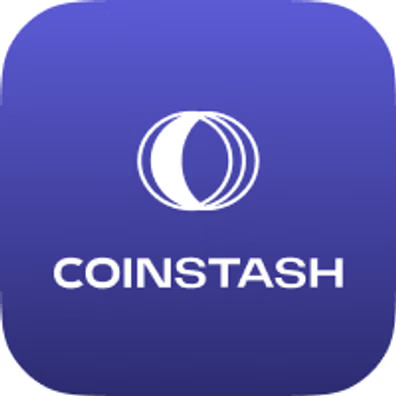
Metaverse Tokens: Hype or Opportunity?
Category: Crypto Exchanges
The metaverse has been one of the most talked-about innovations in the blockchain and tech world. As digital environments become more immersive and decentralized, the rise of metaverse tokens has sparked both massive enthusiasm and skepticism. But the question remains: Are metaverse tokens just another crypto hype, or do they present real investment opportunities?
Let’s break it down.
WHAT ARE METAVERSE TOKENS?
Metaverse tokens are cryptocurrencies used within virtual worlds and digital ecosystems. These tokens enable users to:
• Buy virtual land and digital assets
• Participate in in-game economies
• Trade NFTs (non-fungible tokens)
• Access metaverse-based services
• Earn passive income via staking or play-to-earn models
Popular examples include:
• MANA (Decentraland)
• SAND (The Sandbox)
• AXS (Axie Infinity)
• ENJ (Enjin Coin)
• APE (ApeCoin)
These tokens fuel the economic infrastructure of decentralized digital realities.
WHY THE HYPE?
Several factors have driven the explosive growth of metaverse tokens:
1. Big Tech Adoption
Companies like Meta (Facebook), Apple, and Microsoft are investing billions into metaverse development. When giants move in, the market pays attention.
2. NFT & Gaming Integration
Metaverse platforms blend gaming, NFTs, and blockchain. This creates new earning models (e.g., play-to-earn), attracting users, investors, and developers alike.
3. Scarcity & Ownership
Virtual real estate in metaverses is often limited. Just like physical land, scarcity creates value — especially when backed by active user engagement and commerce.
RISKS: WHERE THE HYPE MEETS REALITY
As with many crypto trends, not all that glitters is gold. Some potential risks include:
1. Speculation Over Utility
Many tokens rise in price based on hype alone — not actual usage or demand. This leads to overvaluation.
2. Low Active User Base
Some platforms have thousands of token holders but very few daily active users. A weak user base often spells trouble for long-term sustainability.
3. Unclear Monetization Models
Not all metaverse projects have clear or effective monetization strategies. Some rely heavily on new investors to keep the ecosystem running, a red flag.
4. Regulatory Concerns
With governments increasing scrutiny over crypto and NFTs, many metaverse projects may face legal or compliance hurdles in the future.
REAL OPPORTUNITIES: WHERE TO LOOK
If you’re considering investing or building in the metaverse space, here’s where the true potential lies:
1. Strong Ecosystems
Platforms with a growing developer base, active communities, and real-world partnerships (e.g., SAND partnering with Adidas) show promise.
2. Cross-Chain Integration
Tokens or platforms that integrate with multiple blockchains offer broader utility and long-term viability.
3. Enterprise Use Cases
Look for metaverse applications beyond gaming: like virtual meetings, education, remote collaboration, and digital commerce.
4. User-Centric Economies
Tokens that reward creators, users, and players fairly, not just early investors, are more likely to succeed.
THE FUTURE: HYPE TPDAY, OPPORTUNITY TOMORROW?
While there is undeniable hype, the metaverse trend is not without substance. Just like the early days of the internet, some projects will fail: but others may reshape how we work, play, learn, and socialize.
For now, metaverse tokens are both hype and opportunity. The key is separating well-built, community-driven platforms from the cash grabs.
SUMMARY
The world of metaverse tokens is complex and rapidly evolving. Whether you’re an investor, gamer, developer, or curious observer, it’s essential to:
• Do your research
• Avoid chasing hype blindly
• Focus on real-world use cases and sustainable ecosystems
Metaverse tokens aren’t just digital coins: they’re a glimpse into the next phase of the internet.
Let’s break it down.
WHAT ARE METAVERSE TOKENS?
Metaverse tokens are cryptocurrencies used within virtual worlds and digital ecosystems. These tokens enable users to:
• Buy virtual land and digital assets
• Participate in in-game economies
• Trade NFTs (non-fungible tokens)
• Access metaverse-based services
• Earn passive income via staking or play-to-earn models
Popular examples include:
• MANA (Decentraland)
• SAND (The Sandbox)
• AXS (Axie Infinity)
• ENJ (Enjin Coin)
• APE (ApeCoin)
These tokens fuel the economic infrastructure of decentralized digital realities.
WHY THE HYPE?
Several factors have driven the explosive growth of metaverse tokens:
1. Big Tech Adoption
Companies like Meta (Facebook), Apple, and Microsoft are investing billions into metaverse development. When giants move in, the market pays attention.
2. NFT & Gaming Integration
Metaverse platforms blend gaming, NFTs, and blockchain. This creates new earning models (e.g., play-to-earn), attracting users, investors, and developers alike.
3. Scarcity & Ownership
Virtual real estate in metaverses is often limited. Just like physical land, scarcity creates value — especially when backed by active user engagement and commerce.
RISKS: WHERE THE HYPE MEETS REALITY
As with many crypto trends, not all that glitters is gold. Some potential risks include:
1. Speculation Over Utility
Many tokens rise in price based on hype alone — not actual usage or demand. This leads to overvaluation.
2. Low Active User Base
Some platforms have thousands of token holders but very few daily active users. A weak user base often spells trouble for long-term sustainability.
3. Unclear Monetization Models
Not all metaverse projects have clear or effective monetization strategies. Some rely heavily on new investors to keep the ecosystem running, a red flag.
4. Regulatory Concerns
With governments increasing scrutiny over crypto and NFTs, many metaverse projects may face legal or compliance hurdles in the future.
REAL OPPORTUNITIES: WHERE TO LOOK
If you’re considering investing or building in the metaverse space, here’s where the true potential lies:
1. Strong Ecosystems
Platforms with a growing developer base, active communities, and real-world partnerships (e.g., SAND partnering with Adidas) show promise.
2. Cross-Chain Integration
Tokens or platforms that integrate with multiple blockchains offer broader utility and long-term viability.
3. Enterprise Use Cases
Look for metaverse applications beyond gaming: like virtual meetings, education, remote collaboration, and digital commerce.
4. User-Centric Economies
Tokens that reward creators, users, and players fairly, not just early investors, are more likely to succeed.
THE FUTURE: HYPE TPDAY, OPPORTUNITY TOMORROW?
While there is undeniable hype, the metaverse trend is not without substance. Just like the early days of the internet, some projects will fail: but others may reshape how we work, play, learn, and socialize.
For now, metaverse tokens are both hype and opportunity. The key is separating well-built, community-driven platforms from the cash grabs.
SUMMARY
The world of metaverse tokens is complex and rapidly evolving. Whether you’re an investor, gamer, developer, or curious observer, it’s essential to:
• Do your research
• Avoid chasing hype blindly
• Focus on real-world use cases and sustainable ecosystems
Metaverse tokens aren’t just digital coins: they’re a glimpse into the next phase of the internet.




